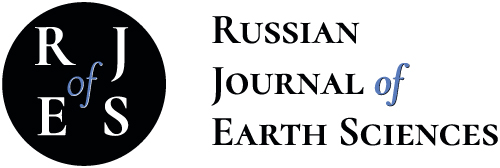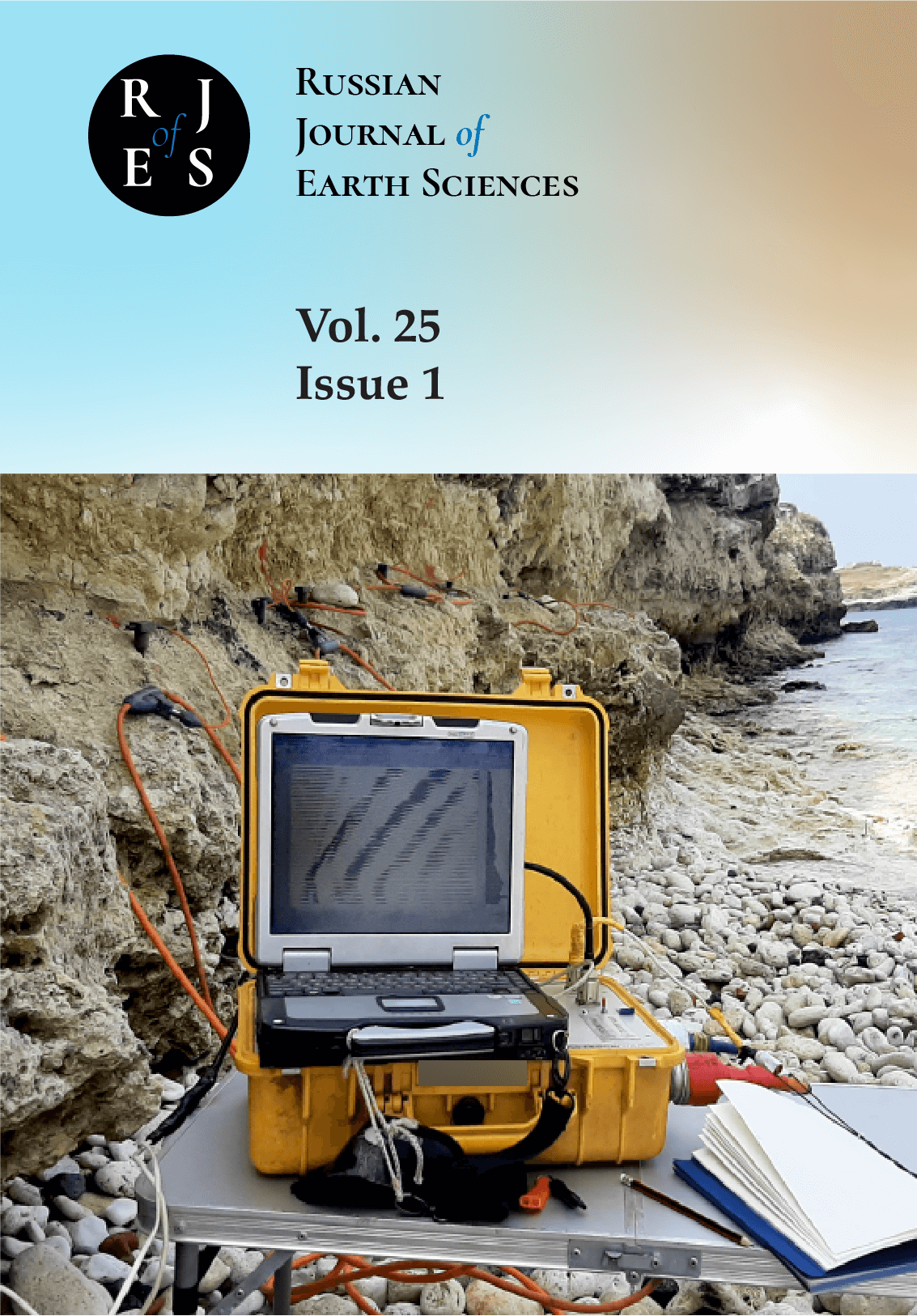Moscow, Russian Federation
VAK Russia 1.6
VAK Russia 2.8.3
UDC 552.08
UDC 552.086
UDC 552.2
UDC 552.12
UDC 616-073.756.8
UDC 531.731.43
UDC 539.217.1
UDC 55
UDC 550.34
UDC 550.383
CSCSTI 37.31
CSCSTI 52.00
CSCSTI 52.47
CSCSTI 37.01
CSCSTI 37.15
CSCSTI 37.25
CSCSTI 38.01
CSCSTI 36.00
CSCSTI 37.00
CSCSTI 38.00
CSCSTI 39.00
Russian Classification of Professions by Education 05.06.01
Russian Classification of Professions by Education 21.02.01
Russian Classification of Professions by Education 21.05.05
Russian Library and Bibliographic Classification 26
Russian Trade and Bibliographic Classification 6335
Russian Trade and Bibliographic Classification 6338
Russian Trade and Bibliographic Classification 63
BISAC JNF037060 Science & Nature / Earth Sciences / Rocks & Minerals
BISAC TEC009150 Civil / Soil & Rock
BISAC SCI SCIENCE
The paper presents the results of non-destructive digital studies of remaining changes in the structural and reservoir volumetric properties of the rocks of the Chayanda oil and gas condensate field as a result of hydraulic fracturing fluid injection. Computed X-ray tomography images were obtained using a high-resolution ProCon X-Ray CT-MINI scanner of the Institute for Problems in Mechanics of the Russian Academy of Sciences. 3D models of the reservoir were created on the basis of the images for digital analysis of the change in reservoir properties after the tests. The structure and relative disposition of rock grains before and after the tests were compared. Local porosity changes in the specimen volume were assessed, including plotting of porosity maps for integral pore space analysis. Pore size distributions were drawn, and conclusions were made about the nature of changes in porometric characteristics of rocks. On the basis of the digital approach the porosity values of rocks were calculated, good agreement with the laboratory measurement data was shown. Changes in porosity distribution over the volume of a specimen of coarse-grained sandstone are described. Uneven distribution of porosity in the specimen after tests is found. Reasons for the described changes in porosity are proposed. It is shown that in the presence of significant heterogeneity of structure and pore space of rocks, the application of traditional methods of reservoir flow properties measurement may be insufficient for accurate characterization of changes in rocks. It is confirmed that the application of nondestructive analysis methods allows to significantly clarify the results of measurements of rock reservoir properties obtained by laboratory method, and in some cases can become an indispensable tool for their correct assessment.
X-ray computed tomography of rocks (CT), porosity, pore space structure, digital core analysis, reservoir capacity properties, porosity distribution
1. Abrosimov K. N., Fomin D. S., Romanenko K. A., et al. Connectivity of Soil Pore Space. Connectivity Indicators on the Example of Different // Soil as a link in the functioning of natural and anthropogenically transformed ecosystems. — Irkutsk : Irkutsk State University, 2021. — P. 206–210. — EDN: https://elibrary.ru/IGOWHR ; (in Russian).
2. Aliyev Z. S., Kotlyarova E. M. Approximate method for creating and operating UGS in formations of heterogeneous thickness using horizontal wells // Proceedings of the Gubkin Russian State University of Oil and Gas (National Research University). Orenburg branch. Environmental responsibility of oil and gas enterprises: Proceedings of the scientific and practical conference. — Saratov : «Amirit» LLC, 2017. — P. 46–55. — EDN: https://elibrary.ru/ZBVNGD ; (in Russian).
3. Ivanov M. K., Burlin Yu. K., Kalmykov G. A., et al. Petrophysical methods of studying core material (Terrigenous deposits). Study guide. Book 1. — Moscow : Publishing House of Moscow University, 2008. — P. 112. — (In Russian).
4. Krivoshchekov S. N., Kochnev A. A. Experience of using X-ray computed tomography to study the properties of rocks // Bulletin of the Perm National Research Polytechnic University. Geology. Oil and Gas and Mining. — 2013. — Vol. 12, no. 6. — P. 32–42. — EDN: https://elibrary.ru/SGLWLL ; (in Russian).
5. Khimulia V. Study of Structural Characteristics of Hydrocarbon Reservoir Pore Space Based on X-Ray Computed Tomography Images // Actual problems of oil and gas. — 2023. — No. 43. — P. 44–57. — DOI:https://doi.org/10.29222/ipng.2078- 5712.2023-43.art4. — (In Russian). DOI: https://doi.org/10.29222/ipng.2078-5712.2023-43.art4; EDN: https://elibrary.ru/UKJRQP
6. Ar Rushood I., Alqahtani N., Wang Y. D., et al. Segmentation of X-Ray Images of Rocks Using Deep Learning // SPE Annual Technical Conference and Exhibition. — SPE, 2020. — DOI:https://doi.org/10.2118/201282-ms.
7. Becker J., Hilden J., Planas B. GeoDict User Guide – PoroDict 2022. — Math2Market GmbH, 2022. — DOI:https://doi.org/10.30423/userguide.geodict2022-porodict.
8. Blunt M. J. Multiphase Flow in Permeable Media: A Pore-Scale Perspective. — Cambridge University Press, 2016. — DOI:https://doi.org/10.1017/9781316145098.
9. Ganat T. A.-A. O. Fundamentals of Reservoir Rock Properties. — Springer International Publishing, 2020. — DOI:https://doi.org/10.1007/978-3-030-28140-3.
10. GeoDict. The Digital Material Laboratory. — 2024. — URL: https://www.math2market.de/ (visited on 09/23/2024).
11. Jia L., Chen M., Jin Y. 3D imaging of fractures in carbonate rocks using X-ray computed tomography technology // Carbonates and Evaporites. — 2013. — Vol. 29, no. 2. — P. 147–153. — DOI:https://doi.org/10.1007/s13146-013-0179-9. EDN: https://elibrary.ru/CYTOMM
12. Khimulia V., Karev V., Kovalenko Yu., et al. Changes in filtration and capacitance properties of highly porous reservoir in underground gas storage: CT-based and geomechanical modeling // Journal of Rock Mechanics and Geotechnical Engineering. — 2024. — Vol. 16, no. 8. — P. 2982–2995. — DOI:https://doi.org/10.1016/j.jrmge.2023.12.015. EDN: https://elibrary.ru/VSIXTI
13. Menke H. P., Gao Y., Linden S., et al. Using Nano-XRM and High-Contrast Imaging to Inform Micro-Porosity Permeability During Stokes-Brinkman Single and Two-Phase Flow Simulations on Micro-CT Images // Frontiers in Water. — 2022. — Vol. 4. — DOI:https://doi.org/10.3389/frwa.2022.935035. EDN: https://elibrary.ru/JUAQRI
14. Merkus H. G. Particle Size, Size Distributions and Shape // Particle Size Measurements. — Springer Netherlands, 2009. — P. 13–42. — DOI:https://doi.org/10.1007/978-1-4020-9016-5_2.
15. Mostaghimi P., Blunt M. J., Bijeljic B. Computations of Absolute Permeability on Micro-CT Images // Mathematical Geosciences. — 2012. — Vol. 45, no. 1. — P. 103–125. — DOI:https://doi.org/10.1007/s11004-012-9431-4. EDN: https://elibrary.ru/BKYODF
16. Naresh K., Khan K. A., Umer R., et al. The use of X-ray computed tomography for design and process modeling of aerospace composites: A review // Materials & Design. — 2020. — Vol. 190. — P. 108553. — DOI:https://doi.org/10.1016/j.matdes.2020.108553.
17. Nimmo J. R. Porosity and Pore Size Distribution // Reference Module in Earth Systems and Environmental Sciences. — Elsevier, 2013. — DOI:https://doi.org/10.1016/B978-0-12-409548-9.05265-9.
18. Njeru R. M., Halisch M., Szanyi J. Micro-scale investigation of the pore network of sandstone in the Pannonian Basin to improve geothermal energy development // Geothermics. — 2024. — Vol. 122. — P. 103071. — DOI:https://doi.org/10.1016/j.geothermics.2024.103071. EDN: https://elibrary.ru/EUYWYQ
19. Ren D., Xu J., Su Sh., et al. Characterization of internal pore size distribution and interconnectivity for asphalt concrete with various porosity using 3D CT scanning images // Construction and Building Materials. — 2023. — Vol. 400. — P. 132751. — DOI:https://doi.org/10.1016/j.conbuildmat.2023.132751. EDN: https://elibrary.ru/BJZRAX
20. Romano C. R., Zahasky Ch., Garing Ch., et al. Subcore Scale Fluid Flow Behavior in a Sandstone With Cataclastic Deformation Bands // Water Resources Research. — 2020. — Vol. 56, no. 4. — DOI:https://doi.org/10.1029/2019wr026715. EDN: https://elibrary.ru/DRTEJV
21. Vajdova V., Baud P., Wong T.-F. Permeability evolution during localized deformation in Bentheim sandstone // Journal of Geophysical Research: Solid Earth. — 2004. — Vol. 109, B10. — DOI:https://doi.org/10.1029/2003jb002942.















